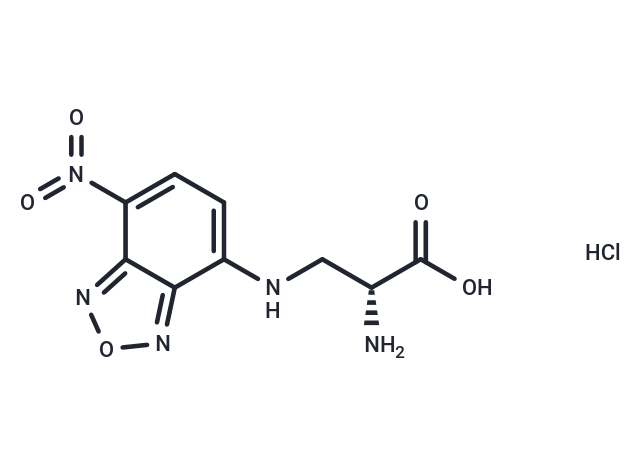Shopping Cart
Remove All Your shopping cart is currently empty
Your shopping cart is currently empty
NADA-green is a fluorescent probe used for labeling peptidoglycan in live bacteria. It integrates into the peptidoglycan biosynthesis of various bacteria.

| Pack Size | Price | USA Warehouse | Global Warehouse | Quantity |
|---|---|---|---|---|
| 1 mg | $128 | In Stock | In Stock | |
| 5 mg | $326 | In Stock | In Stock | |
| 10 mg | $519 | - | In Stock | |
| 25 mg | $987 | - | In Stock |
| Description | NADA-green is a fluorescent probe used for labeling peptidoglycan in live bacteria. It integrates into the peptidoglycan biosynthesis of various bacteria. |
| In vitro | I. Bacterial growth monitoring 1. Cultivate bacteria: Cultivate target bacteria in a suitable culture medium. 2. Add NADA-green probe: Add NADA-green to the bacterial culture medium, usually at a concentration of 1-10 µM, to allow the probe to integrate into the bacterial peptidoglycan synthesis process. 3. Fluorescence monitoring: Real-time monitoring of bacterial growth by fluorescence microscopy or flow cytometry. After the probe binds to the peptidoglycan synthesis, NADA-green will emit fluorescence at a specific wavelength (usually green light, λex 490 nm, λem 520 nm), which can be used to evaluate the synthesis process of bacterial cell walls. 4. Data analysis: Record the changes in fluorescence intensity during bacterial growth and analyze them in combination with changes in bacterial numbers. II. Bacterial cell wall synthesis study 1. Add NADA-green to the culture medium: At different stages of bacterial growth, add NADA-green to observe the changes in cell wall synthesis under different conditions. 2. Fluorescence microscopy analysis: Using a fluorescence microscope to observe the synthesis of the cell wall and its spatial distribution can provide regional information on bacterial peptidoglycan synthesis. 3. Optimization of experimental conditions: Adjust the probe concentration, temperature, culture time and other factors as needed to further study the relationship between bacterial growth and cell wall synthesis. III. Study on the mechanism of action of antibiotics 1. Add NADA-green and antibiotics: Add NADA-green probe and antibiotics to bacterial culture at the same time. 2. Monitor fluorescence changes: Monitor the changes in fluorescence during bacterial growth by fluorescence microscopy or flow cytometry to analyze the effects of antibiotics. 3. Analyze the effect of antibiotics: Determine the effect of antibiotics on cell wall synthesis by comparing the fluorescence intensity of the experimental group with that of the control group. IV. Dynamic analysis of bacterial population growth 1. Co-culture of multiple bacteria: Co-culture different types of bacteria in the same culture medium. 2. Add NADA-green: Add NADA-green probe to the culture medium to monitor the growth and peptidoglycan synthesis of different bacterial populations. 3. Fluorescence microscopy observation: Use a fluorescence microscope to image multiple bacterial populations and analyze the cell wall synthesis of different types of bacteria. |
| Synonyms | NADAgreen, (-)-NADA |
| Molecular Weight | 303.66 |
| Formula | C9H10ClN5O5 |
| Cas No. | 2253733-11-6 |
| Smiles | N(C[C@H](C(O)=O)N)C=1C=2C(C(N(=O)=O)=CC1)=NON2.Cl |
| Relative Density. | no data available |
| Storage | keep away from direct sunlight,store at low temperature | Powder: -20°C for 3 years | In solvent: -80°C for 1 year | Shipping with blue ice/Shipping at ambient temperature. | |||||||||||||||||||||||||||||||||||
| Solubility Information | DMSO: 80 mg/mL (263.45 mM), Sonication is recommended. | |||||||||||||||||||||||||||||||||||
Solution Preparation Table | ||||||||||||||||||||||||||||||||||||
DMSO
| ||||||||||||||||||||||||||||||||||||
| Size | Quantity | Unit Price | Amount | Operation |
|---|

Copyright © 2015-2025 TargetMol Chemicals Inc. All Rights Reserved.